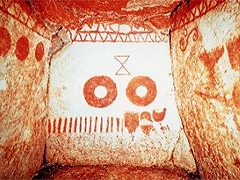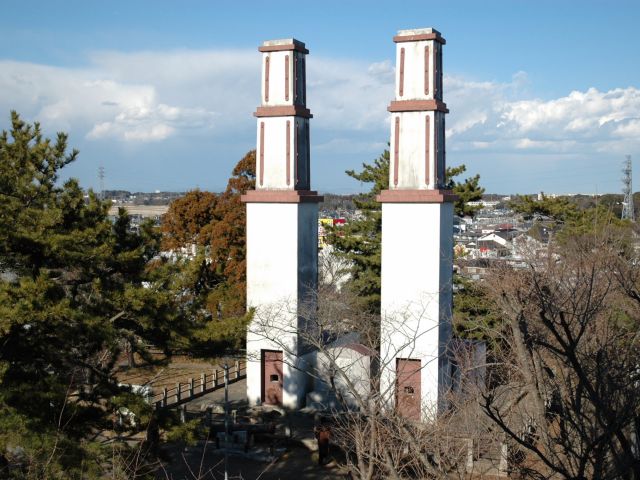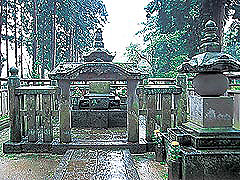
虎塚古墳
鬱蒼とした森の中に完全な形で残る全長56.5mの前方後円墳。石室には赤色顔料のベンガラで幾何学模様や武具などの彩色壁画が描かれている。石室は春と秋に一般公開(見学大人160円、小中学生80円)がある。国指定史跡。
Info
Business Hours
Price
Spot Category

(C)ひたちなか市

(C)ひたちなか市
The information provided reflects the details available at the time of the survey.
Please note that facility details may change due to the facility’s circumstances, so please check for the latest information before visiting.
This content has been translated using machine translation.
Information provided by: JTB Publishing
The content uses an automatic translation service, which is not always accurate.
The translated content may be different from the original meaning, so please understand and use it.

鬱蒼とした森の中に完全な形で残る全長56.5mの前方後円墳。石室には赤色顔料のベンガラで幾何学模様や武具などの彩色壁画が描かれている。石室は春と秋に一般公開(見学大人160円、小中学生80円)がある。国指定史跡。

鮮魚店や水産加工品店などが軒を連ね、海の幸がズラリ。どの商品も格安で手に入るとあって、週末には行列ができるほどだ。冬にはあんこうなど地元ならではの品も並ぶ。回転寿司やあんこう鍋が食べられる食事処もある。22店舗が営業する一大観光市場となっている。

鉄製大砲を鋳造する溶鉄炉があった地。沖に出没する外国船に備え、水戸藩第9代藩主斉昭[なりあき]の命で造られた。現在は復元された反射炉及びレンガを焼いた登り窯が残るのみだが、往時はほかに、役人詰所、大砲方、細工所などがあった。

The year of Oei 21 (1414) is a famous temple of the Jodo sect, reportedly as the Genjon. A great deal of donation was made by the Tokugawa family to rebuild the main hall and bell tower (currently under reconstruction facilities and cannot be seen), from where they were deeply devoted to the tenth-generation Ryokujinjin, and established it as a bodhi-ji temple. The main hall, which is the best of the temple architecture of the early Edo period, is renovated in 2007. You can feel the power of the Tokugawa shogunate in the Buddhist tools and furnishings. On the left side of the main hall is the tomb of Chihime.

A temple of the Jōdo Shinshu Hongan-ji school. The first generation of the Seiki family, Asamitsu, who also participated in the shogunate as a sensei crowd, invited the younger brother of the clan, Shinbutsu, to open. It is said that the name of the temple, the name of the temple, is derived from the name of the law that Asamitsu came to the house and gave it to him. It holds a number of cultural treasures, including the "Shōjo Kanashu", which is said to be the autograph of Kinji, as well as portraits and wooden statues of the morning light, the Mireya Gate, and the Nijomon. At the back of the precinct, where there is a large ginkgo tree and a bronze statue of the saint, there are tombs ranging from the first morning light to the fourth generation Tokihiro.

An ancillary facility of the Kasumigaura City History Museum, which was a relocation of a wealthy local farmhouse from the Edo period, consisting of two buildings: a thatched main building and Itakura, which used to be a grain warehouse.
This website uses cookies so that we can provide you with the best user experience possible. Cookie information is stored in your browser and performs functions such as recognising you when you return to our website and helping our team to understand which sections of the website you find most interesting and useful.
Strictly Necessary Cookie should be enabled at all times so that we can save your preferences for cookie settings.
If you disable this cookie, we will not be able to save your preferences. This means that every time you visit this website you will need to enable or disable cookies again.
